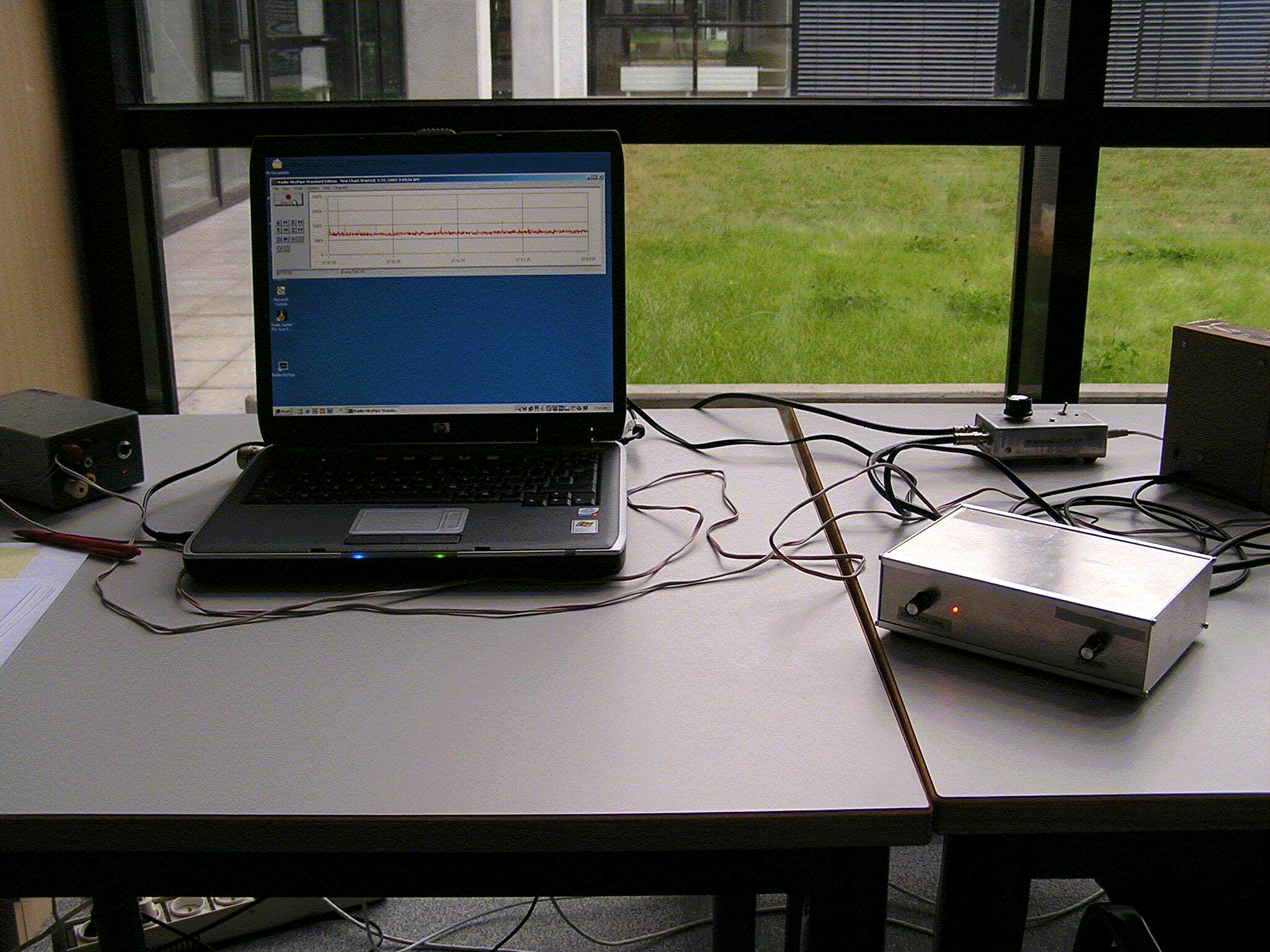
ISU Summer Session 2003: Results from the RadioJove Observations
Joachim Köppen DF3GJ Kiel/Strasbourg/Illkirch Summer 2003
The Equipment
RadioJove RJ1.1 receivers, RS-2020S noise calibration source (both designed by R.S.Flagg AH6NM), full wavelength inphase dipole antenna, helical resonator bandpass filter (both designed and built by J.Köppen DF3GJ), SkyPipePro software (by J.Sky KH5SKY).

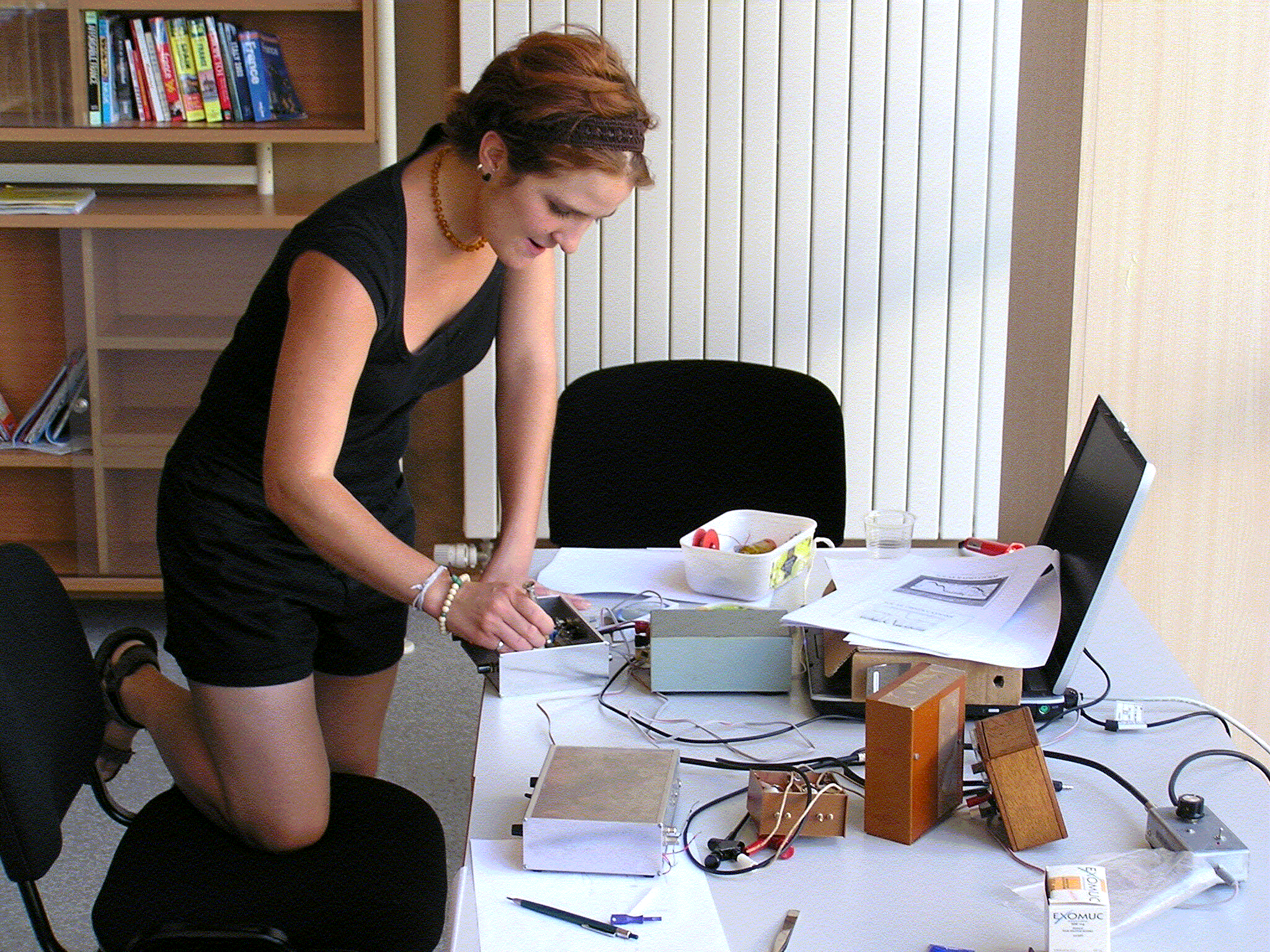
The Results
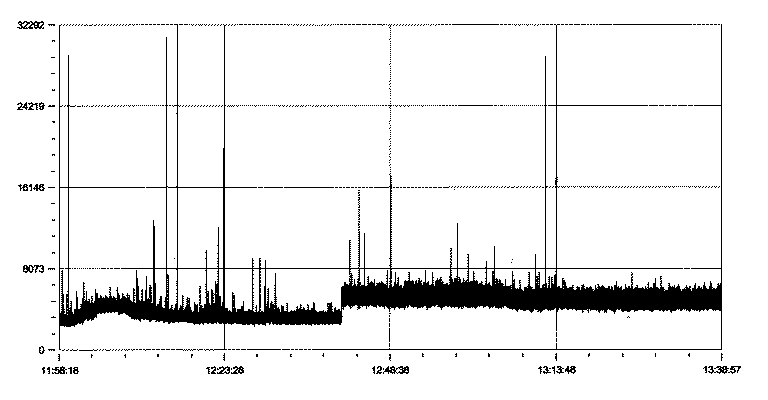
The very first data taken with our setup, were done over lunchtime on 26 June 2003. The spikes are often some carrier drifting through the passband; but as I wasn't listening, I can't tell what happened shortly after 12:00 that caused the interesting hump. Neither why the signal and also the noise level suddenly increased at about 12:35 - maybe someone switched on a computer? Note that the mean level of the noise as well as the fluctuations about that average increased: since the fluctuations may be caused by short impulse type noise, this might indicate that the switching-type power supply is not well shielded and pollutes the airwaves! Ugh!

Towards the end of this data block, one notes an increasing level of narrow spikes: They are lightnings from an approaching thunderstorm ... about two hours later, the sky was dark, and the plot was red with very strong spikes - I could not save that data - and I took down the antenna.

Example of observations from our ISU site: The noise level is rather high (usually step 3 to 4 on R.S.Flagg's RF 2020S calibration noise source, i.e. 100 to 200 kK temperature), but sometimes one could notice slow increases of the noise level, sometimes of artificial origin, sometimes of natural origin (times are central European summer time = UTC+2 hrs)

When you look at the NOAA lists of solar events, you'll notice that the days of July 2003 were rather quiet. Some days have a very short list! Some events we missed, some happened during the night, but nonetheless, we were lucky:
This is what we saw of the 1 Aug. 03 solar burst... From the NOAA Space Environment Center's Edited Solar Events list we get that it was Event No. 1710+, beginning at 1402 UTC, medium intensity Type III fast drift burst (III/2), located on the sun at 030-055 (latitude - longitude from central meridian). Type III bursts are the most common radio events on the sun. They can be associated with flares, but also appear in active regions not directly connected with a specific flare. In the Radio Jove Data Archive at NASA's GSFC we found these data ...

... which someone at a site with an enviously low level of background noise was able to observe! Note that we clearly got the strong event at 14:02 UTC, but the weaker event at 14:06 might also be just noticeable in our data...!?!
Later, I found this dynamic spectrum from the Nançay Decametric Radiotelescope where the burst is a bit difficult to find among what appears to be broad band interference bursts:
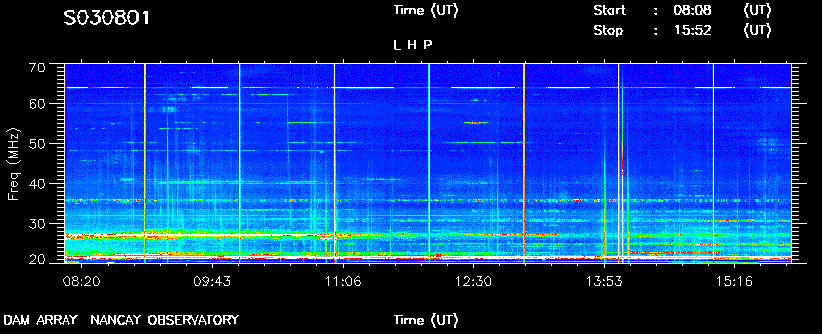
Because it is so nice, here is our burst in a bit more detail:
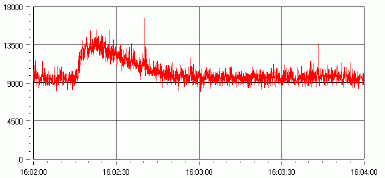
On the same day as, W3FAF had recorded another event:
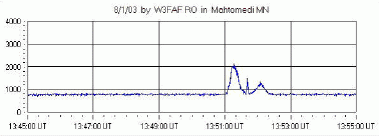
And this is what we captured of the burst:
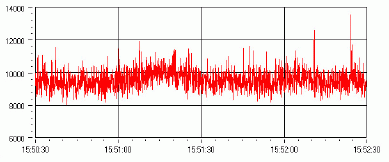
It was not a strong burst and also our antenna is somewhat shielded by the building in the afternoon. So this does not allow a definitive identification, and we are not convinced to have observed it. Unfortunately, we lost the data of August an a consequence of the theft of the notebook computer, which renders any further analysis impossible.
Ed Slane's report can be downloaded here (450 kB MS Word file).
Here are two pictures from 23 July 2003, showing the typical daytime signals, usually caused by man-made interference. Note that sometimes the tracing shows a flat top, because the amplitude of the audio signal exceeds the level that the sound card can handle (about 32000 units)


And here are two pictures from 29 July 2003: the first one shows the calibration sequence using the RS-2002S source (highest step is at 800 kK). The lowest background level is thus between 50 and 100 kK.

and this morning's event is as strong as 1000 kK. But as there was no entry on the NOAA list, and nobody put anything in the Jove data archive, this nice looking event did most probably not come from the sun ... though it has the typical 'shark-fin' shape of a type III burst!

Inspection of the Radio Jove data archive and the NOAA lists reveals that there were not many solar radio events, and the few ones that came when the sun was above the horizon we missed, because they came just before we switched on in the morning, or shortly after we switched off in the evening, or in the lunch break while nobody has her or his receiver in operation...
But on one day, Sabrina had hers running over the break, and there occured a nice burst picked up by John Rock in England:

What does our chart show at the same time window?
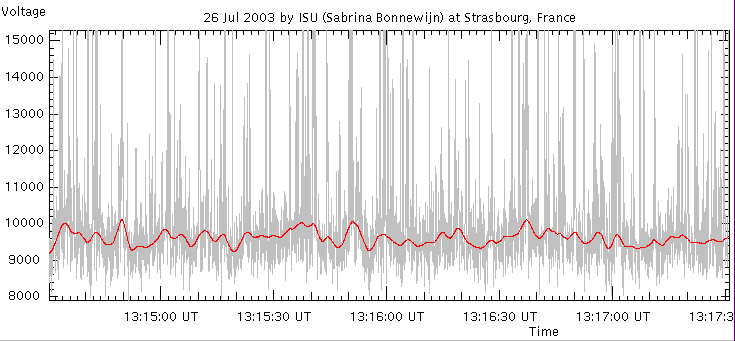
Next to nothing! Even smoothing does not reveal anything? It is tempting to identify the two peaks at 13:15:30 and 13:16:37 local time with two peaks in John's plot...
If John's caught the bursts, why didn't we get them??? Well, our dipole antenna is directly oriented north-south, and at 13:00 the sun is almost directly due south: in the direction where a dipole has a null in its sensitivity pattern. In other words, the sun stood where our telescope is blind!
This calibration sequence by Jan Harry shows that the external background was as high as the calibrator's step 4, i.e. 200 kK ...
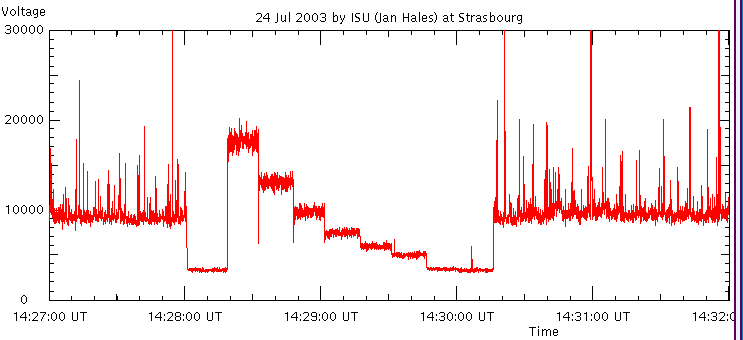
... compared with John Rock's background of about 50 kK. These days, after much experimentation and effort, the daytime noise level is typically 100 kK, and in late June 2004 I measured it as low as 60 kK.
| Top of the Page | back to Main Page | back to my Home Page |